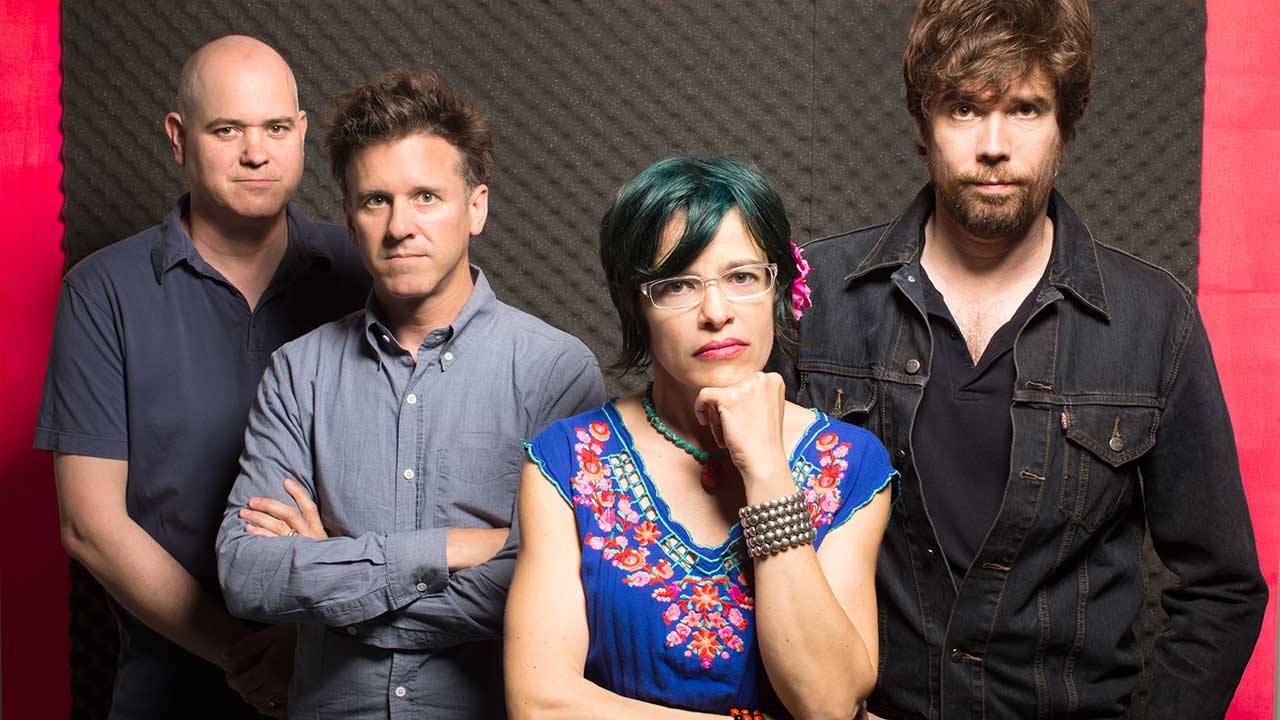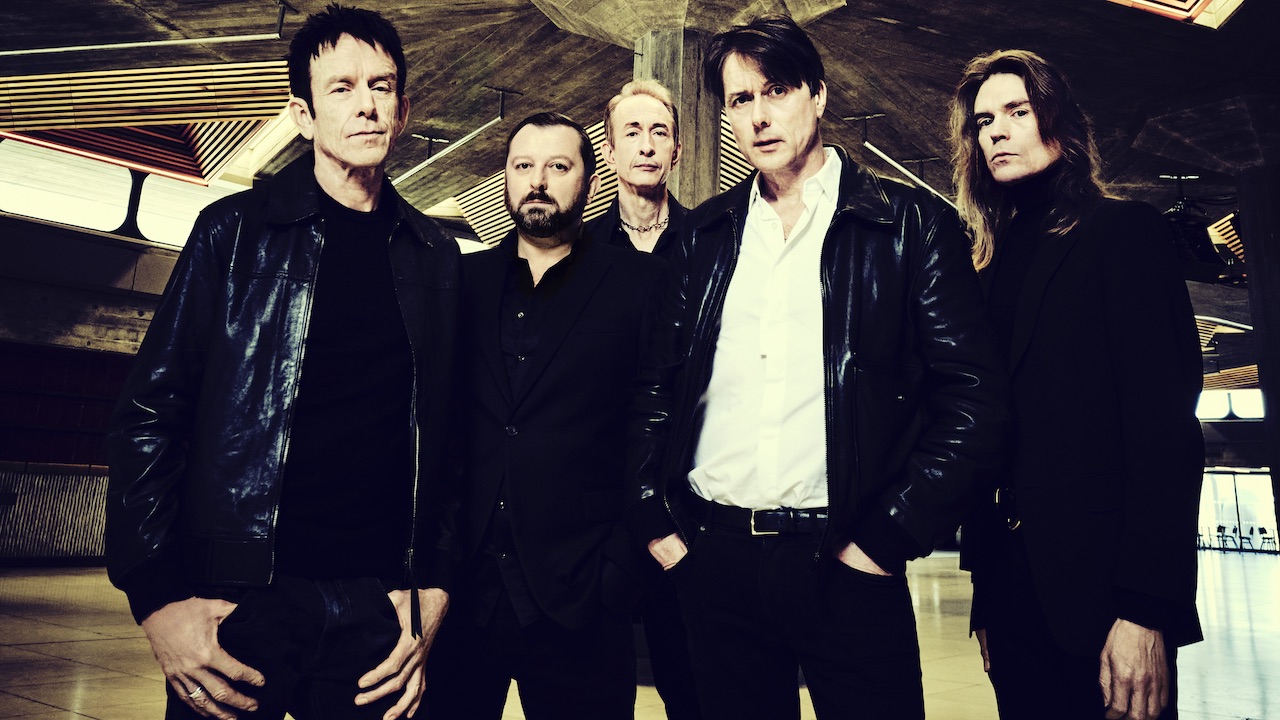“We didn't emulate Mudhoney's behaviour because we might not be alive if we had!" Superchunk look back on the decade that helped birth and destroy US alt rock
Superchunk's Mac McCaughan and Jim Wilbur talk us through a life spent on the fringes of alt rock – and being inadvertent godparents of mainstream emo

Their second single might’ve made ‘Slack Motherfucker’ core to the 90s indie rock lexicon, but Chapel Hill’s Superchunk were anything but. Their relentless album-tour-album-tour cycle would grind most bands to paste, and their first decade saw a sequence of classic albums that married brash punk energy with sugar rush melodies and sharp songwriting. While they skirted the pitfalls that incinerated so many other acts, the 90s nevertheless took their toll, with the band experiencing exhaustion, the collapse of romantic relationships and the reality of life in an industry where nothing is ever certain.
After a nine-year slowdown the band returned with renewed vigour, and have gone from strength to strength since 2010’s Majesty Shredding. While today’s Superchunk may look slightly different - Laura King has taken over from longtime drummer Jon Wurster, and Betsy Wright subs in as live bassist for co-founder Laura Ballance - the band remains true to the sound, spirit and ethos that has guided them from day one.
With this year marking three decades since third album On The Mouth was released, we turn back the clock and ask the band about the decade that helped both birth and destroy American indie rock.
“In terms of the UK and Europe I felt we’d maybe already reached our peak,” says frontman Mac McCaughan drily. “We’d been on the cover of the NME with our second record [1991’s ebullient No Pocky For Kitty] and usually it's only downhill from there. It wasn't like in the States, which was a steady uphill trajectory. I feel like by the time On The Mouth came out we’d already settled into a point where our fans were still coming to see us and the casual observers had moved on to Britpop or whatever.”
Chock-full of indie anthems like Precision Auto (later covered by the likes of Jimmy Eat World and Les Savy Fav) and Mower the album provides a glorious jolt of bittersweet adrenaline that’s perfect for either a lost-in-the-moment pogo or glummer, bedroom-bound introspection. “We were trying to make a different, slightly more expansive record each time even though, listening to them now, they're not that different from each other,” chuckles Mac. “In our minds we were incorporating and absorbing things from bands we were touring with like Rocket From The Crypt, Drive Like Jehu and Polvo, but, when you listen to it, it just sounds like a Superchunk record.”
Guitarist Jim Wilbur has his own thoughts on why, even if they were subconsciously channelling The Pale Saints or The Boo Radleys, On The Mouth was only ever going to sound one way. “We’re idiosyncratic,” he says. “We're not trained musicians. And that's why the band always sounds like us because the limitations are flaunted, and they become strengths. So even when we're trying something different, there's only so much we can do because of the ability behind it all.”
Recorded in 1992 at Westbeach Recorders, the studio founded by Bad Religion’s Brett Gurewitz, On The Mouth was produced by San Diego native John Reis, erstwhile member of acts like Pitchfork, Drive Like Jehu, Hot Snakes and Rocket From The Crypt. Superchunk played with Jehu in San Diego on their first tour, and became firm friends. “We felt a kinship with those guys,” says Mac. “They were big fans of Honor Role, who were a band from over here in North Carolina, so we bonded over that, traded records and became friends. We really loved the way their records sounded and wanted to work where they’d worked. We didn't really know what John would do as a producer or what a producer did, but it just seemed like a fun thing.”
The latest news, features and interviews direct to your inbox, from the global home of alternative music.
On The Mouth landed slap-bang in the middle of the post-Nevermind, pre-Dookie era that split punk rock open and chewed up innumerable indie, punk and post-hardcore heroes who took their shot at major label stardom. On the face of it, the album’s mix of exuberant fuzz and gutpunch hooks should have made them ripe for major label plunder - especially with the music industry eye of Sauron temporarily hovering over their Chapel Hill hometown. Nevertheless, the band kept it indie - viewing ‘the man’ warily even if their decision was born of pragmatism rather than a staunch DIY-or-die attitude. With the band’s contract ending with Matador the band took things in-house, deciding to go it alone via Merge - the label Mac had formed with bassist Laura Ballance back in 1989 - after a distribution deal with Touch & Go Records opened up new possibilities. “It wasn't that we didn't like Matador,” says Mac. “It was just more like… well, why wouldn't we? We had this apparatus, why wouldn't we use it?”
If the DIY approach made sense and they managed to avoid the major label tarpit that beset peers like Seaweed, Girls Against Boys and Jawbox, it wasn’t entirely by design. “We had a meeting with Danny Goldberg [then president of Atlantic Records] in Los Angeles, and we had lunch in New York with someone from DGC,” recalls Mac. “So there was interest, but it never got to a point where there was a number on a piece of paper. Maybe we just put out the vibe that we weren’t interested? Perhaps we just weren't ambitious enough, but it just never seemed like it was the way to get ahead.”
Mac suggests the 90s represented a period of trying to “figure out how to be a band” - a surprising admission considering the cohesiveness of their output. He mentions long-running UK post-punkers The Mekons as inspiration in terms of longevity and ongoing creative purpose, as well as early tourmates Mudhoney. “We certainly didn't emulate all of their behaviour because we might not still be alive if we had,” he laughs. “But Mudhoney knew when to take things seriously and when to not take things seriously, and how to have a work ethic without being rock stars. They had a good balance of wanting to play great shows and have people buy their records but also having a sense of humour.”
For a few years there Superchunk was a sustainable means of making rent. But if the band managed to survive and thrive while many of their peers crumbled, the decade nevertheless took its toll. The band tapped out of a mooted tour of Australia and New Zealand with Sebadoh, while Mac’s relationship with Laura came to an end. “We knew the vibe was going to be weird sometimes but it's interesting how little we talked about breaking up the band,” says Mac. As anyone who’s suffered the awkward agony of avoiding eye contact with an ex at school, work or in the supermarket, the situation begs the question as to how comfortable it might have been to tour, practise and work with a former partner. Was this down to a laudable sense of maturity? “Well, if you can call compartmentalisation mature…” begins Mac with a slight grimace. “Or you can maybe call it something less healthy than that. But, no, I think a lot of it was just ‘we’ve already accomplished all this, why would we start again?’ I think we were just slightly stubborn and decided to power through.”
Superchunk ‘powered through’ until 2001, releasing the aptly titled Here’s To Shutting Up before activity slowed to a crawl. They’d triumphantly reemerge in 2010 and continue releasing relevant, often remarkable music from there on in, and it’s interesting to note how the band managed to weather and survive numerous industry fads, nestling alongside and yet often outside such maligned subgenres as grunge, pop punk, college rock and emo. “I've never really felt part of anything like that other than indie rock, and that doesn't describe a sound but a way of going about things,” says Mac philosophically. “None of them are bad words, I guess, but grunge gets the most laughs.” As for Jim, he lets slip that Superchunk may well be inadvertent godparents to mainstream emo. “I worked at [beloved North Carolina venue] the Cat's Cradle club right around the turn of the century,” he says. “The first show I worked was Jimmy Eat World, and I remember them saying ‘we wouldn't be here right now if it wasn't for you’. It was almost like ‘oh my god, what did we do?!’”
All gags aside, as they head towards 35 years of life Superchunk find themselves in an enviable place: respected and adored, and confident in their ability to expand and experiment at will - last year’s lushly-arranged Wild Loneliness the perfect case in point. The band also have the luxury of looking back at a treasure trove of past material. The recent Misfits & Mistakes box set compiles 50 B-sides, standalone songs and hard-to-find tracks from the past 15 years, while milestone anniversaries for releases like On The Mouth mean they’re able to dig back and reconnect with material that might not have been aired in decades. “We can't play 40 songs a night but it's a good problem to have,” says Mac of the struggle to put a setlist together. “It's also just fun to try to come up with some shit that's going to surprise people. Like when we played On The Mouth in its entirety in New York City - we didn't tell people, so it was kind of cool when people realised what was going on halfway through.”
Jim, demonstrating that trademark Superchunk pragmatism to the last, quips that the gig provided fans with an added bonus: “It also gave people the chance to go to the bar because their least favourite song was about to be played.”
Superchunk - Misfits & Mistakes: Singles, B-sides & Strays 2007-2023 is available now via Merge Records. The band are touring now
Alex Deller writes features, interviews and reviews for various print and online publications including The Guardian, The BBC, The Independent, Metal Hammer, Quietus, Rock Sound, Rue Morgue and Bandcamp.

